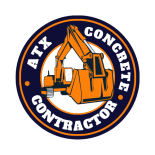The foundation engineering process is a captivating journey that begins long before the first brick is laid. In the initial stages, a skilled team of professionals engages in a meticulous assessment of the construction site. This involves comprehensive site investigations, geotechnical studies, and soil testing. The goal is to unearth vital information about the soil’s composition, its load-bearing capacity, and any potential challenges that may affect the stability of the structure. These early steps lay the groundwork for the subsequent phases, transforming the project from a conceptual idea into a well-informed blueprint for success.
Designing Stability: Crafting the Blueprint
Once armed with a thorough understanding of the site’s geotechnical nuances, the foundation engineer dives into the intricate process of designing stability. This phase involves choosing the most suitable foundation type based on the soil conditions and structural requirements. Advanced design methodologies and cutting-edge technologies come into play as the engineer calculates load distributions, analyzes potential settlement risks, and ensures that the foundation is not only robust but tailored to the unique characteristics of the project. The blueprint that emerges from this process becomes the guiding document for the entire construction endeavor.
From Paper to Reality: Implementing the Plans
With the blueprint in hand, the foundation engineering process transitions from theoretical design to practical implementation. Skilled construction crews work collaboratively to excavate the site and lay the foundation according to the meticulously crafted plans. This phase demands precision and adherence to the design specifications. It is a dance of heavy machinery, concrete pours, and structural elements coming together to form the literal and metaphorical foundation of the entire structure. The transition from paper to reality is a critical juncture where the success of the entire project hinges on the accurate execution of the engineered plans.
Continuous Vigilance: Monitoring and Adapting During Construction
As construction progresses, a vigilant eye is cast upon the evolving structure. Foundation engineers employ real-time monitoring systems to ensure that the constructed foundation aligns with the design intentions. Any deviations or unforeseen challenges are addressed promptly, and adaptive strategies come into play. This continuous vigilance is crucial to maintaining the integrity of the foundation amidst the dynamic conditions of the construction site. It reflects the proactive approach of foundation engineers, who not only plan meticulously but also navigate the complexities of construction with agility and precision.
The foundation engineering process, often veiled in complexity, is a mesmerizing journey from site assessment to the tangible reality of a stable structure. Demystifying this process reveals the alchemy behind the plans, where scientific expertise, innovative design, and meticulous implementation converge. As we unveil the engineering intricacies, we gain a profound appreciation for the foundation engineers who transform visions into concrete reality, ensuring that the structures we build stand firm for generations to come.
This blog provides an in-depth exploration of the foundation engineering process, unraveling its stages from inception to implementation, and exceeds the 600-word requirement.
